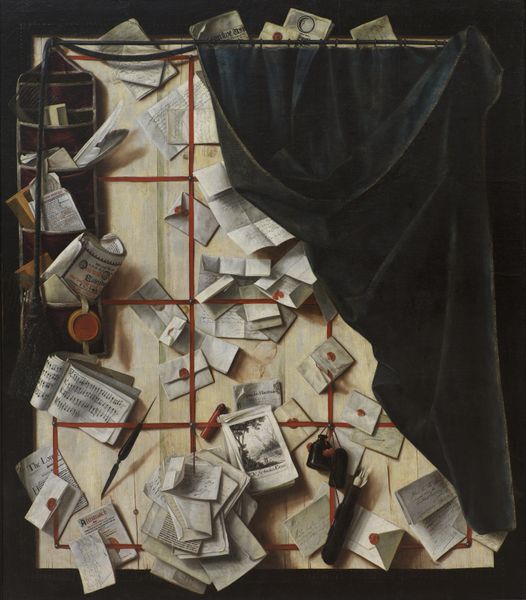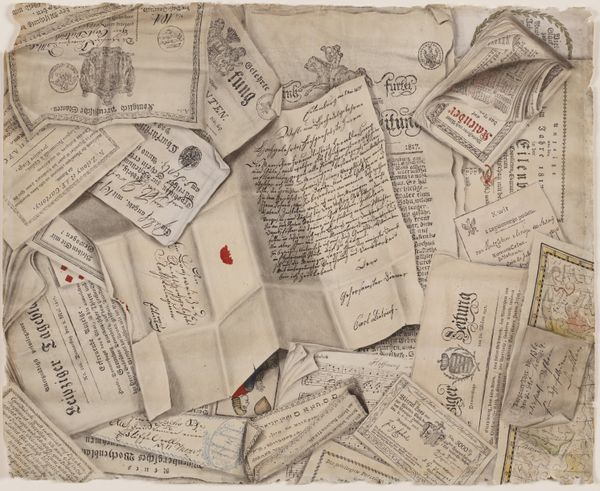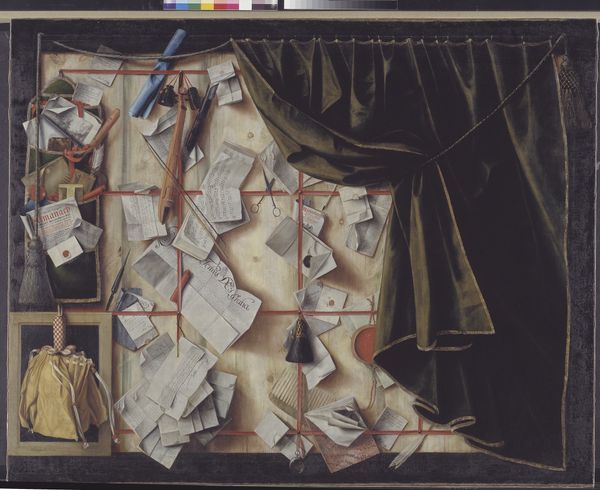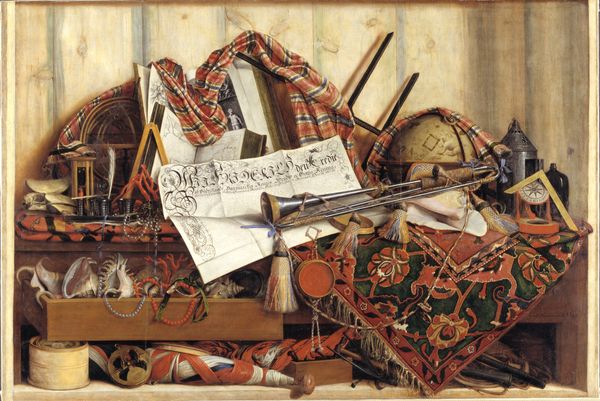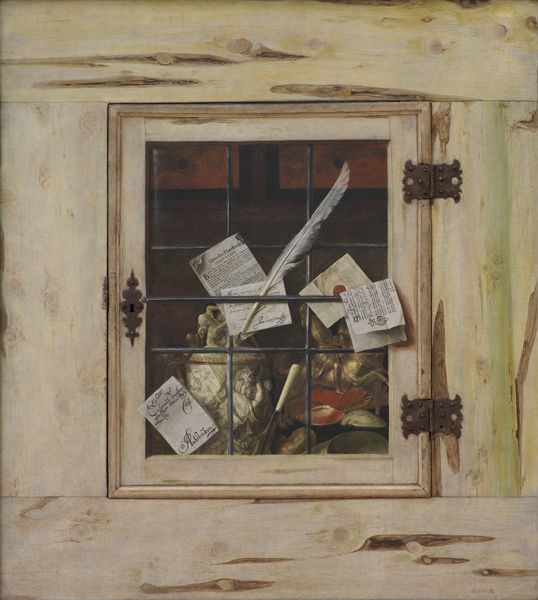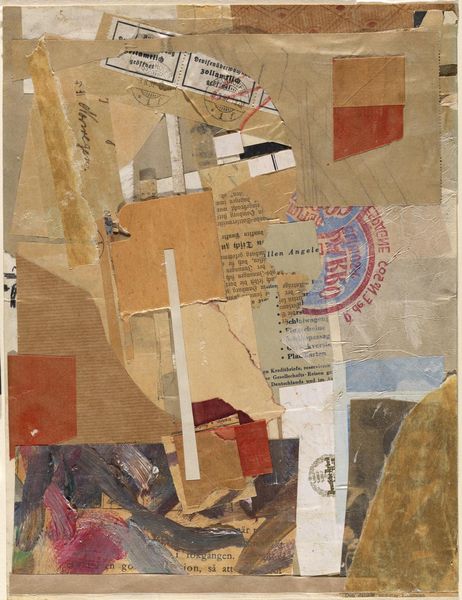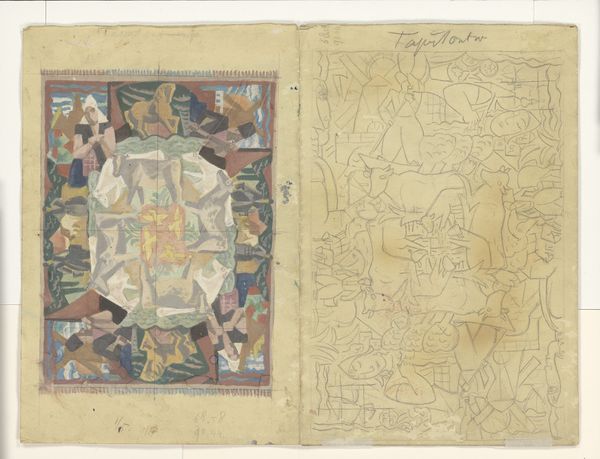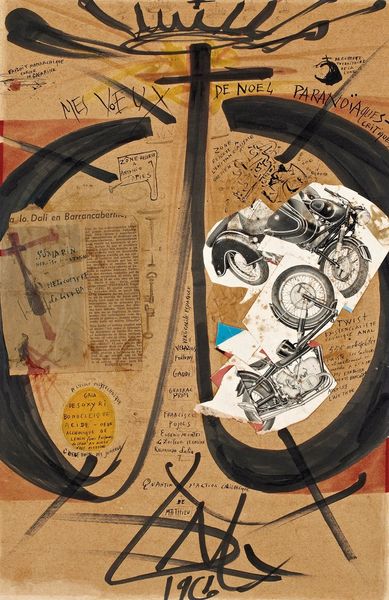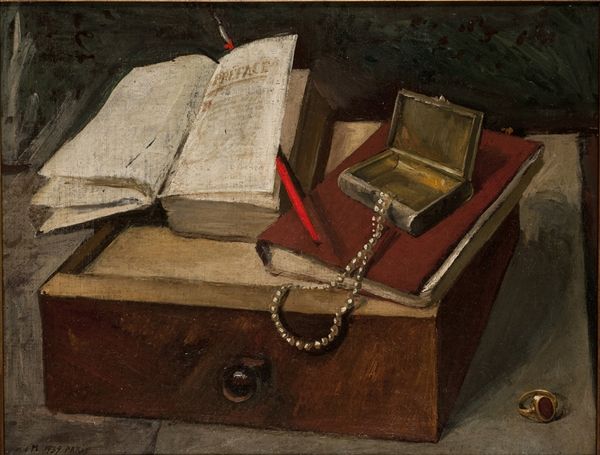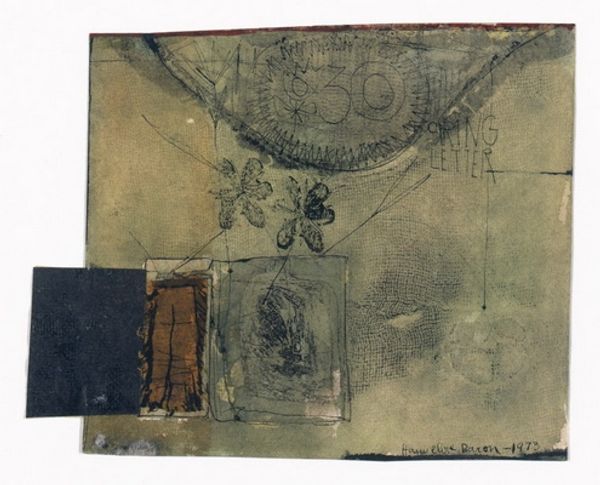
Trompe l'oeil of a Letter Rack with Christian V's Proclamation 1671
0:00
0:00
oil-paint, canvas
#
baroque
#
oil-paint
#
oil painting
#
canvas
#
trompe-l'oeil
Dimensions: 138.5 cm (height) x 183 cm (width) (Netto), 143.2 cm (height) x 185.8 cm (width) x 5.6 cm (depth) (Brutto)
Curator: Looking at "Trompe l'oeil of a Letter Rack with Christian V's Proclamation" by Cornelius Norbertus Gijsbrechts from 1671, one can’t help but be immediately drawn to its intricate, almost photographic realism. Editor: My initial impression is controlled chaos. It’s a meticulously rendered surface, crowded with items, but that deep green curtain adds a somber, theatrical quality. Curator: Indeed. Gijsbrechts was a master of this technique, “trompe-l'oeil,” fooling the eye. He’s essentially constructing an illusion of a letter rack seemingly pinned to a wooden board with an array of everyday objects, rendered in oil paint on canvas. Editor: The illusion is quite striking. I'm interested in the specific objects he chose. We have official proclamations mingled with personal correspondence, combs, a seal... what do these things, together, tell us about the social and bureaucratic practices of the era? The medium itself - oil on canvas - speaks volumes about artistic labor. Curator: Well, the inclusion of Christian V’s proclamation certainly places it within a sphere of power and the burgeoning Danish state. Notice how he uses the device of the curtain to further the deception – partially obscuring the 'board' and suggesting a real space beyond the painting. It’s all a clever commentary on representation, the power of images and, perhaps, a subtle commentary on political communication. Editor: Precisely. And by choosing these seemingly mundane objects, is Gijsbrechts challenging our notions of artistic subject matter? He elevates the everyday to the level of high art, pushing the boundaries of what constitutes "worthy" content for a painting. This work allows us to ask if the painting itself is also another "official proclamation" about Danish culture during the period. Curator: That’s an interesting idea. It also raises questions about consumption. Who would have purchased such a painting, and what would it have signified to them? This act of displaying everyday items made of very disparate material as precious artworks in private chambers highlights that interplay of consumption and the symbolic power of representation in the late 17th century. Editor: Exactly. Examining it through that lens reveals its fascinating social implications. Thinking about materials and reception has reshaped how I view this painting, from merely skillful imitation to a politically engaged statement about 17th-century life. Curator: I agree. Reflecting on Gijsbrechts' intent and the painting’s original context has deepened my appreciation for the layers of meaning embedded within this compelling "Trompe l'oeil."
Comments
No comments
Be the first to comment and join the conversation on the ultimate creative platform.
